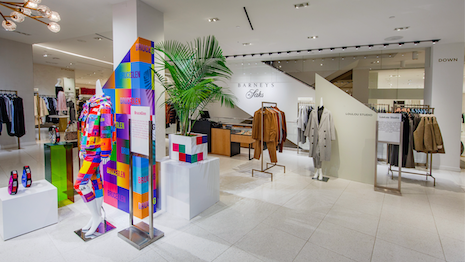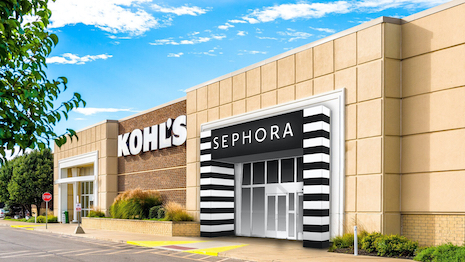 The in-store shopping experience is still very valuable to consumers. Image credit: Neiman Marcus
The in-store shopping experience is still very valuable to consumers. Image credit: Neiman Marcus Brands are actively working to expand their offline presences, even as online shopping sales continue to climb.
Although ecommerce saw momentous growth throughout the COVID-19 pandemic, the in-person shopping experience is arguably irreplaceable. According to a new whitepaper from analytics platform Placer.ai, brands want to continue expanding offline offerings in an attempt to provide unique shopping experiences that will foster consumer loyalty and a mutually beneficial relationship.
“Brands need to start by recognizing that sales is only one piece of the physical location puzzle — even if it is a very important piece,” said Ethan Chernofsky, vice president of marketing at Placer.ai, Los Altos, CA. “Providing an immersive and authentic experience is going to matter more than ever, especially in a changing city environment.
“A great in-store experience can drive a significant boost to online sales, and major marketing value,” he said.
Retail trends
Physical store locations and their strategic placements can help a brand in furthering its reach.
Brands want to establish more offline presences so that they can craft unique and memorable in-store experiences that will influence consumers to return to their stores. Creating a personalized, meaningful in-store experience helps increase the likelihood of consumer loyalty.
 Consumers are more likely to make a spur-of-the-moment purchase in-stores. Image credit: Shutterstock
Consumers are more likely to make a spur-of-the-moment purchase in-stores. Image credit: Shutterstock
More physical stores enable brands to lower costs of returns and delivery, which helps them to extend their reach and appeal to shoppers.
Brands including Nike, Lululemon, Under Armor and Adidas have pushed for owned offline spaces and are seeing visits rise significantly. Compared to 2019, all these brands’ stores have seen their weekly visits increase in 2021.
Placer.ai expects this trend will remain.
Better experiences ultimately create happier customers, more revenue for retailers and more sustainable tenants for shopping center owners. Lowered rents are also attracting more consumers to areas with physical stores.
According to UrbanDigs, median rent dropped by 20 percent in January 2021 year-over-year, even as signed leases grew by 22 percent, signifying that those coming to the city are younger and taking advantage of this newfound affordability.
Brands are also increasing to implement flagship stores.
 Barneys at Saks floor at New York flagship. Image courtesy of Saks Fifth Avenue
Barneys at Saks floor at New York flagship. Image courtesy of Saks Fifth Avenue
Younger audiences have shown a preference for in-store shopping and a more authentic and direct brand relationship.
The report found that once a flagship store has found its footing and a brand is representing itself well, shoppers will be attracted to it, even those who are not local. This is evident in flagship locations including Nike in New York City and Tom Ford in Miami (see story).
Rise of the middle
Another apparent trend is the rise of the middle. Brands and department stores are utilizing upmarket concepts, seizing the attention of new consumers.
A successful example of this has been LVMH-owned Sephora and their continued expansion into Kohl’s stores.
 Sephora is bringing its store-in-a-store concept to Kohl’s. Image credit: Sephora
Sephora is bringing its store-in-a-store concept to Kohl’s. Image credit: Sephora
In February, Sephora announced it was opening 260 new stores in 2021, 200 being Sephora at Kohl’s stores, aiming to make beauty accessible to even more consumers.
This will be the retailer’s largest store expansion in its 21-year history in the United States. With store openings, Sephora has asserted its confidence in the future of brick-and-mortar shopping (see story).
However, ecommerce is not going anywhere. Brands that want to thrive will utilize an omnichannel approach, hoping to offer experiences that will inspire consumers to purchase from them in a multitude of ways.
With cost-cutting in focus, luxury and non-luxury retailers alike are zeroing in on digital advances, supply chains, inventory and health and safety standards to improve business. Another popular trend is to seek out new revenue models and introduce partnerships to create profitable omnichannel approaches (see story).
“The best brands are going to realize that both are critical channels that need to be leveraged to create a better overall experience for the customer,” Mr. Chernofsky said. “Stores will be increasingly valued for their role in the discovery process — fitting and developing a deeper brand relationship that can drive ongoing online sales — and not just for the sales that take place in the store.
“We need to understand online and offline channels as complementary components in providing the ideal customer experience, not as competing forces,” he said. “A big part of this is giving physical locations the full credit they deserve for the wide array of values they provide.”